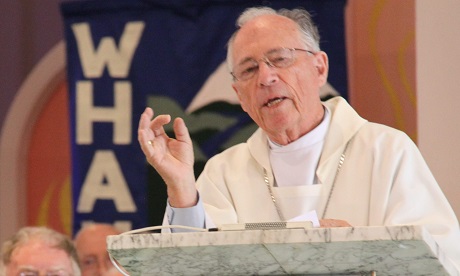Some ask about polarisations occurring within the Church, and they expect honest answers. Others give me their own frank and honest opinions. Their concerns deserve respectful dialogue.
Yet others have partially removed themselves from in-house discussion by opting for a “spirituality” more or less independent of the Church.
Confusions that come to us from the wider secular culture are another matter again.
Some of the polarisations within the Church can be described as “push-back.”
It is important to understand the reasons for push-back – from whichever direction it comes.
It needs to be made fruitful. Otherwise, it just degenerates into culture wars. These have already reached fever pitch in some parts of the world. We don’t need that.
But, first the good news: the common ground between polarised positions within the Church is that people’s faith really matters to them.
Perhaps we should be more concerned about those who seem not to notice.
Above all, however, small family arguments should not be given more time than we give to reaching out to people in need and working to transform society.
The First Vatican Council (1869-70)
was the first to which
no lay people were invited.
Push-backs and pendulum swings
Some of today’s push-backs are residue from previous pendulum swings.
In its day, feudal society had found an echo in the Church, some of the bishops being princes and lords.
That kind of society is what the French Revolution pushed back against by calling for liberty, equality and fraternity – and by persecution.
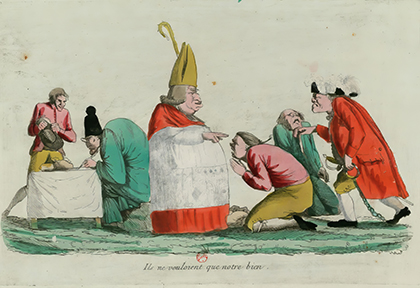
Persecution rebounded in the form of many new religious orders, expanded missionary work, and a revival movement, which was known as Ultramontanism because it was centred on Rome (“over the mountains” from northern Europe.)
Features of this revival included parish missions and multiple devotions, processions, apparitions, miracles, pilgrimages, scapulas, medals, and novenas – which have their place, though not as bargain for salvation.
It is the era of neo-Gothic and baroque architecture, and exuberant adornment of churches. Clergy became a group apart even more, and later, with dress to match.
The First Vatican Council (1869-70) was the first to which no lay people were invited.
The era featured a theology that became increasingly unable to address modern questions, culminating in the anti-Modernism of Popes Pius IX and X.
Intellectual enquiry was not encouraged, and complete subordination to Church authority, especially the Pope’s, was the order of the day.
With some variations, this gave us our experience of Catholicism up until the 1960’s.
The much-needed corrective came with ressourcement: better methods of studying the ancient scriptures, and the liturgies, theologies and practices of Christianity’s earlier centuries, gradually emerged, and fed into the renewal mandated by the Second Vatican Council.
Some of today’s push-back is a hankering for features of Ultramontanism; and some of those features are mistaken for “tradition.”
Different experiences
Push-back can also arise from different generations’ experience.
Some of us grew up within a Church that was controlling, paternalistic, clericalist and conformist.
The post-Vatican II Church included push-back against that way of being Church. There were good reasons for this – based on what it means to be a person and what it means to fully respect the primacy of conscience:
The dignity of the human person is a concern of which people of our time are becoming increasingly more aware.
In growing numbers people demand that they should enjoy the use of their own responsible judgment and freedom.
They want to decide on their actions on grounds of duty and conscience, without external pressure or coercion. (On Religious Liberty –Dignitatis Humanae, n.1.)

A true appreciation of personhood and of conscience fosters personal responsibility in others. It relies more on catechesis and moral formation than on regulation and penalties.
It is more akin to authorising or enabling others to grow as persons. It requires a formation aimed at helping them to understand the issues and to choose well.
It moves away from social patterns and leadership styles that were more typical of feudal societies, and that prolonged over-dependence and personal immaturity.
This accounts for different expectations of how Church leadership should be exercised.
Those who grew up since the 1960’s
have not experienced
a highly authoritarian
and conformist way of being Church.
But they have experienced
the emptiness of secular ideology
and the triteness of consumerism,
and they are pushing back against that.
There has been push-back from some who fear that respect for the autonomy of persons and the primacy of conscience involves a failure to uphold church teachings.
Those who grew up since the 1960’s have not experienced a highly authoritarian and conformist way of being Church.
But they have experienced the emptiness of secular ideology and the triteness of consumerism, and they are pushing back against that.
They rightly look to the Church for a strong sense of the transcendent and clear markers against false ideologies, and are concerned when it seems to them that the liturgy renewal involves a diminished sense of mystery and of the transcendent.
From ceremony to ritual
Conversely, of course, some of their efforts to emphasise transcendence can seem to others like an over-emphasis on secondary matters and externals.
After all, even the Church’s teachings do not all have the same level of importance:
The “… biggest problem is when the message we preach seems identified with secondary aspects which important as they are, do not in and of themselves convey the heart of Christ’s message…” (Pope Francis, The Joy of the Gospel, n.34)
That applies also to Church practices. In his scholarly article, One Hundred Years of the Discipline of the Liturgy (Australasian Catholic Record, Oct 2023), Gerard Moore reminds us of the difference between “ceremony” and “ritual”.
We watch a ceremony, and we participate in a ritual (acknowledging some overlap).
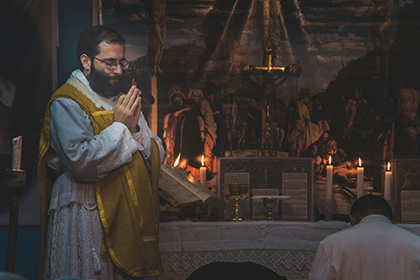
Before the Second Vatican Council, it was assumed that the congregation “attended” Mass, which the priest “celebrated.”
It was the priest’s responsibility to ensure the ceremony was correctly performed, and there were manuals that spelled that out in much detail.
It easily became a preoccupation with rubrics, vestments, birettas, mitres, candles etc.
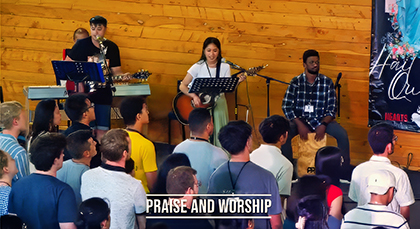
But the Council reminded us that the Mass is not a ceremony which the congregation attends, it is a ritual in which they participate.
Although the priest has a special ministry, it is the whole congregation that celebrates Eucharist.
There are also polarised expectations resulting from how we think of “mystery” and “reverence.”
The confusion derives from pre-Council times when we did not have a good understanding of the difference between “devotions” and “liturgy” – they were all “what we did in church.”
Our understanding of “reverence” derived mainly from our demeanour before the Blessed Sacrament.
That kind of reverence, proper to Eucharistic devotions, can inhibit the sense of mystery and of reverence that properly belong to liturgy.
(That is why official sources prefer the reserved Sacrament to have its own sacred space, apart from the sanctuary. It is not part of the liturgy of the Mass.)
In liturgy, properly understood, the “mystery” is indeed Christ’s real presence, and “reverence” is the way we respond to what He is doing for us, which is different in each of the sacraments and at different moments in the celebration of Eucharist.
An example might help:
For Polynesian Catholics, the Gospel procession involves song, dance and expressions of joy at Christ’s coming among us in his word, and the congregation rises to its feet out of respect.
When I explained this to a group of seminarians, one commented that this could be “a distraction.”
That good man was still thinking of the kind of reverence we express in the presence of the reserved Sacrament and in private prayer.
The Gospel procession invites us to come out of our private time to join a worshipping community – to participate in a ritual.
Intrusions
Where the difference between devotions and liturgy has not yet been well understood, efforts are still being made to re-insert various devotions into the liturgy, and objects of devotion into the sanctuary.
But nothing is more striking than the “noble simplicity” of which the Introduction to the Roman Missal speaks.
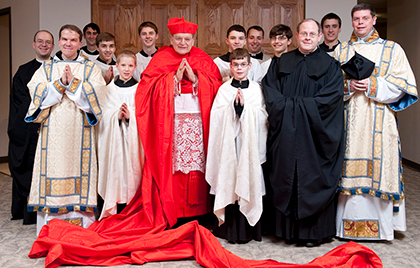
There have been sporadic efforts to re-introduce the maniple, the biretta, etc, but these are more usual with fringe groups, which tells its own story.
Good ritual doesn’t need things that have lost their meaning.
For example: when the priest had his back to the congregation and prayed the Eucharistic Prayer quietly, in Latin, the people had no way of knowing where he was up to. And so, a bell was rung at various stages of the Mass to help the people know.
The current rubric allows that a small bell may be rung “if appropriate,” “as a signal to the faithful” (it has no other meaning) – e.g. in a large congregation where it may be difficult for people to see or hear.
But in a small building, where the people are carefully following the prayer which they can hear clearly, the sudden interruption of a bell can be quite a distraction.
Some ways of not causing distraction during the Eucharistic Prayer seem to be little more than common courtesies.
But many of them come back to the fact that one voice prayerfully proclaiming the Eucharistic Prayer helps the prayerful participation of the people, and so the less shuffling around at the altar the better.
This led priests and bishops, some years ago, to forgo options that are open to them, sharing different parts of the Eucharistic Prayer among the concelebrants, all concelebrants saying the words of institution out loud, bishops putting mitres off and on during the Mass…
Forgoing such options occurs naturally to those who think of the congregation’s needs more than their own prerogatives.
Same signs, different meanings
Of course, “secondary things” and “externals” are often intended to point beyond themselves.
Signs are a kind of language. Clerical dress is an example of this, and of a recent push-back. Dress can be a sign of being different, separate, apart.
Alternatively, it can indicate closeness to people, being one with them.
What counts is not what our signs means to ourselves, but what they mean to those we want to communicate with.
Up-to-date research by the Wilberforce Foundation (Faith and Belief, 2023) confirms that it is not status or position that attracts New Zealanders to explore the faith:
People living in Aotearoa New Zealand value authenticity with 66 percent of respondents being attracted to explore spirituality if they see people living out a genuine faith or spirituality first-hand.
“Authenticity around faith and spirituality in conversations is … a key factor in leading individuals to consider faith or spiritual matters…” (p.28)
Then, more pointedly, it says: “the number one repellent to exploring faith and spirituality” was hearing it from people who publicly and officially represent it.
The reasons for this might not be recent scandals, because the Wilberforce Study goes on to say that:
… the above finding does not hold for the younger generation, who are more open to influencers. Gen Z are the most likely generation to investigate faith or spirituality if they hear it from a representative public figure…
Gen Z are also the most likely to be attracted to exploring spirituality further because of stories or testimonies from people who have changed because of their faith or spirituality… (p 28).
So, perhaps the research is saying, as many Catholics do, that ministry is not helped by regalia, customs or titles that symbolise power – the remnants of Christendom.
Adaptation to pastoral need goes with being incarnational – being not of the world, but truly in it nevertheless – not just physically, but also socially.
In 1971, the International Theological Commission had warned against “the tendency to form a separate caste”.
I have been struck by the coincidence of two unrelated events: in order not to re-traumatise victims, the NZ bishops knew better than to wear clericals when they came before the Royal Commission.
Nearly fifty years earlier, one of our most pastorally dedicated priests had been visiting a hospital, and he told the nurse that a patient he visited had seemed agitated.
She told him that the monitoring machines often showed a rise in blood pressure and pulse rates when “you men come in dressed in deep black”.
After that he was always smartly dressed and identifiable as a priest, but never again in “deep black.”
We need to be sensitive to these matters because how we come across is meant to be for the benefit of others and not just to satisfy some inner need of our own.
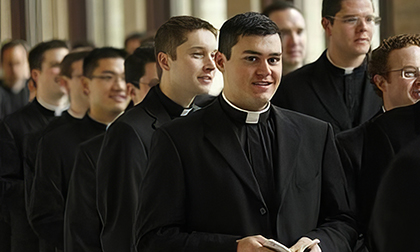
Throughout the Church, pastoral savvy has resulted in many different forms of clerical dress.
It’s the mission that doesn’t change.
Some push-back on this account comes out of a pious exaggeration relating to ordination which led Pope St John Paul II to remind us that “what one becomes through ordination is in the realm of function, not dignity or holiness” (Christi Fideles Laici, 51).
It is the function that is special.
The importance of belonging
Our “small family arguments” do not cancel our belonging. They take place within the context of family bonds that go deeper than differences.
There is a Catholic culture formed through the inter-action the Church’s scriptures, liturgies, devotions, hymns, literature, art, pilgrimages, parishes, Religious communities, schools, work for justice, peace, development and health care, personal sacrifices, faithfulness…
Within this culture, the desire to belong is mysteriously stronger than anything that offends.
But I could be accused of avoiding the more serious issues if I omitted to acknowledge the kind of differences that can threaten unity within the Church.
At one level, the continued use of the unrevised Missal might seem harmless enough – live and let live.
But it can also smudge reality: a General Council of the Church mandated a revision of the Missal, and every Pope since has emphasised that continued use of the unrevised Missal is a special concession for specific pastoral needs.
In other words, the revised and unrevised Missals are not just alternative, ordinary, ways of celebrating Mass.
What matters here is not just the difference between two Missals; it is our Catholic practice of accepting the mandate of a General Council, and its endorsement by all subsequent Popes.
There is no point in blaming Pope Francis: he is the one charged by the Holy Spirit to preside over the unity of the Church.
Fortunately, he can be unfazed by small family arguments, but he is also clear about the boundaries of unity. Our prayers for him need to be accompanied by our loyalty.
- Peter Cullinane is Emeritus Bishop of Palmerston North, New Zealand and a respected writer and retreat leader who, in his retirement, is still busy at the local, national, and international levels.
News category: Analysis and Comment.
